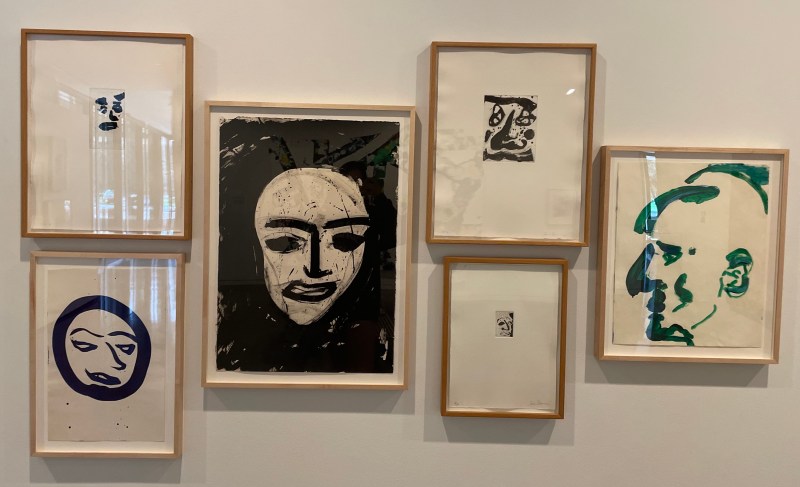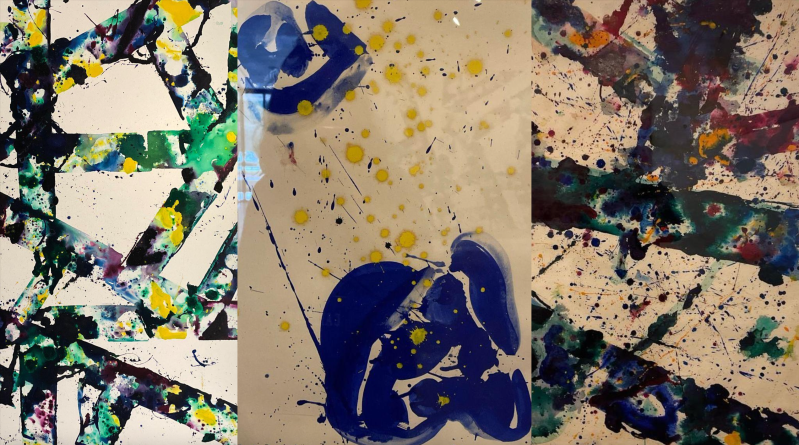As I walked into the Anderson Collection on a Saturday morning, I stumbled upon a contemporary exhibition on Sam Francis, a Bay Area artist. Before reading the descriptions, I strolled around the room past some abstract expressionism and self-portraits that resembled sketches.
I started to read the descriptions on the walls, and learned that Francis spent time in Japan, where he was influenced by local culture. I was looking at a painting that covered an entire wall, when two older women walked into the room, immersed in a conversation about his color choices. I wanted to participate: There is something easy about conversations with older people.
As I attempted to come up with a question about Francis’s work, one turned to me and asked: “Isn’t it too abstract? What do you think?”
“Yes, it’s a bit too abstract for me. I am not very into modern art. This one is very Pollock though,” I said and pointed to a piece with myriad colors and brushstrokes dropped onto the canvas. “Yes, me too.”
She continued to explain how she was fascinated by his connection with the Anderson family and all its history, then talked about how she liked the colors in the one that resembled a Pollock.
She read out a quote of his from the wall, “Color is the real substance for me, the real underlying thing.” I really liked that sentence. She said she found it interesting how he mixed up his own colors “to produce rare or obscure pigments.“
We then talked about my classes, where I live and how Steve Job’s fascination with calligraphy led to aesthetic user interfaces. As they left, leaving a mark in my memory as lovely strangers, I was again alone with the paintings.
It’s funny that I’ll probably never see this woman again. I don’t know her name, but I know some aspects about how she appreciates art. People enter our lives, some more briefly than others, then leave. She entered my life for scarcely a few minutes, but left me with a new perspective on looking at modern art.
A smaller painting, with some dark blue figures and yellow dots, reminded me of a Miró painting. I hadn’t necessarily felt anything while looking at it, but feeling surfaced as I went on to read its description: “Francis first became interested in the color blue in Paris.”
How does one become interested in a color? The quotes from him continued, “Blue is the color of speculation, because it is full of shadow.” Is it the gloominess of blue that reminds him of a shadow?
“My painting frees my spirit,” Francis wrote.
He viewed art as a means to escape reality, and I resonate with that. Blue is elegant — both free up in the heavens and melancholic like darkness. Pondering about colors’ meanings and the ideas floating around in an artist’s mind is my escape from reality.
As I pondered blue, I remembered a psychology experiment where researchers habituated babies to the color blue. They then tested dis-habituation with green and another shade of blue, to reveal whether babies can categorize colors.
What an elegant way to explore color categorization. We see colors from an incredibly young age, and carry them always.
In another corner, I gazed at Francis’ portraits. Initially, there wasn’t anything particularly special about them, but the descriptions sparked interest.
“These self-portraits are not mirror images of Francis and his physical features; rather they are manifestations of his inward looking at his essence.” What a beautiful contrasting idea — the face you draw to represent your own face is not actually your physical face. It is who you are.
Who are we when no one is watching?

It was written on the walls that he was influenced by Jungian psychoanalysis.
I recently read about Carl Jung, who believed in persona or social masks that we wear in public to present ourselves to others. Jung believed there was a difference between people’s personas and true selves.
I started to resonate with the persona concept once I moved to the U.S. where people present themselves so happily and energetically to others. At first, I questioned how the constant positivity was possible. Life is full of ups and downs, with sadness and worries intrinsic to this cycle. But people hide it behind masks.
As embodied in his portraits, Francis aimed to uncover what was below the masks.
It was his words, rather than his drawings, that moved me in this room in the gallery.
Leaving this room devoted to this California artist, I had an epiphany: I hadn’t really looked at art pieces through the artists’ inner mind and intentions. I would look at a painting as an individual entity to appreciate it separately from its creators. But there is something very psychological about creating a piece of art. Ultimately, it is a product of the artist’s mind, a reflection of their thoughts.
I would urge you to visit Francis’s collection at the Anderson Collection before it ends.
